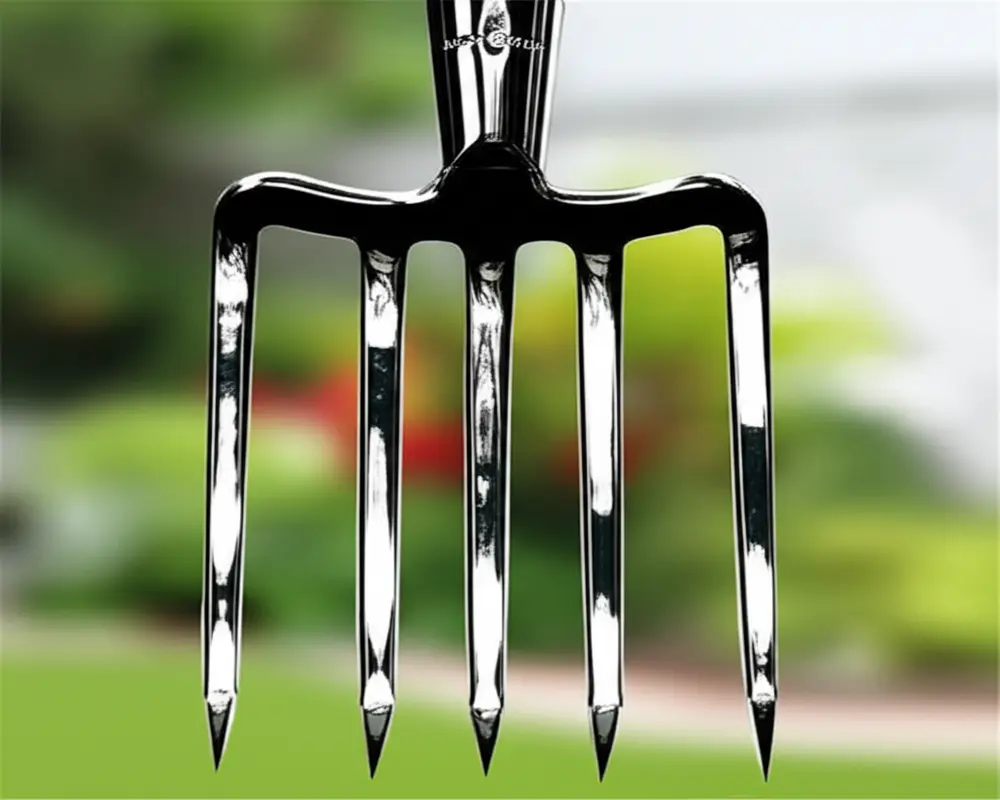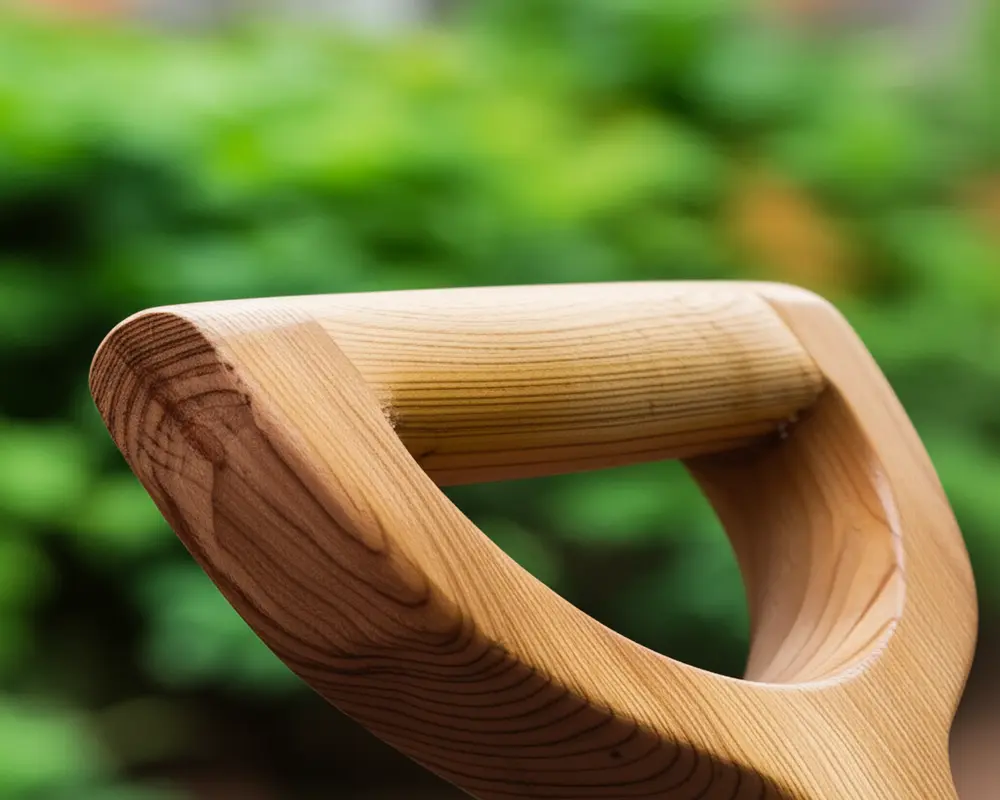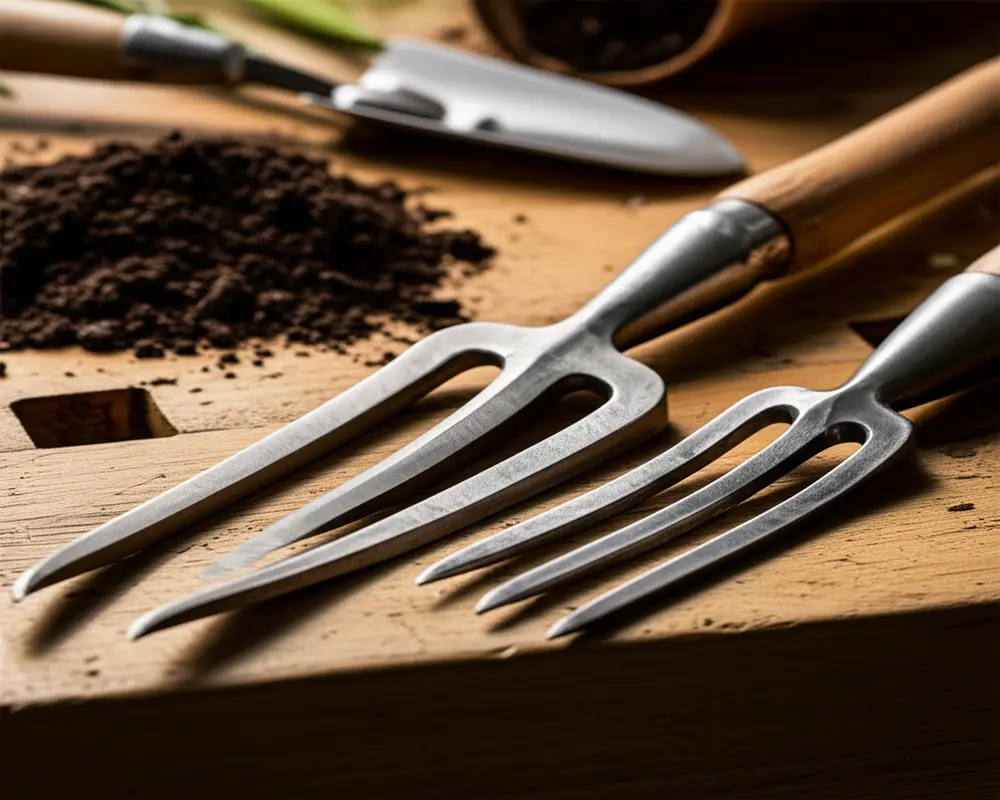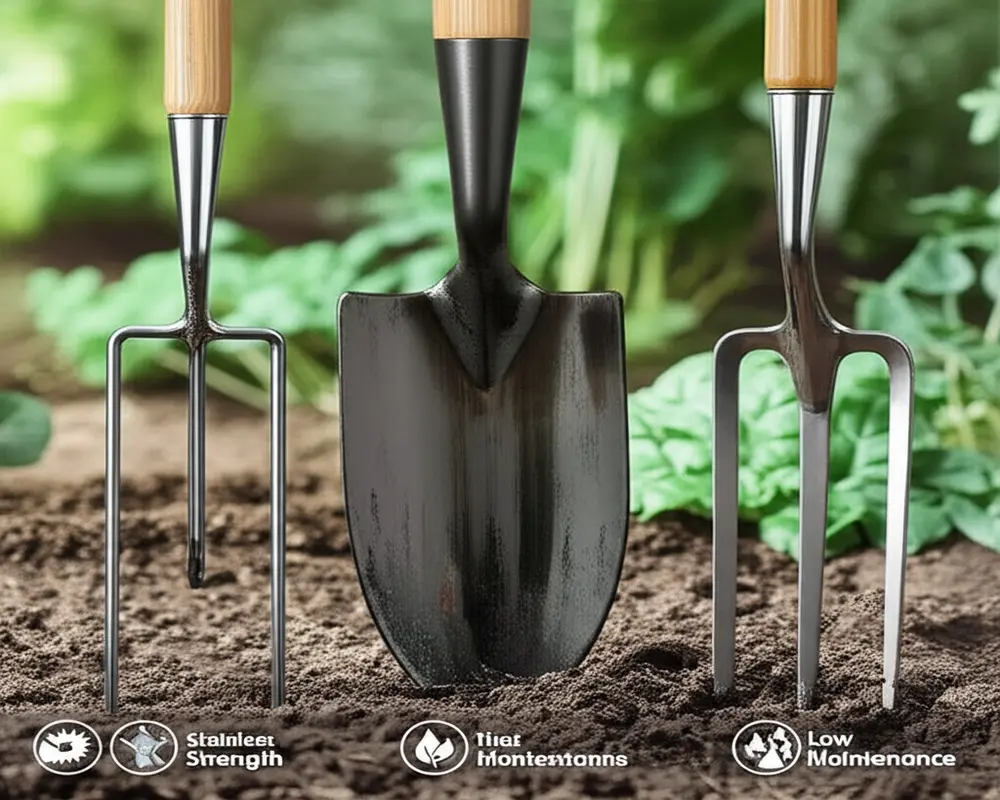Choosing the right Garden Fork Material Comparison plays a foundational role in optimizing your gardening tools for peak performance and long-lasting durability. This guide offers a deep dive into comparing garden fork materials, helping you choose the best option tailored to your gardening needs, soil types, and budget considerations in 2025.
I. Introduction: Digging Deeper into Garden Fork Material Comparison
A. The Foundation of Your Garden: Why Material Choice Matters
Garden forks are indispensable tools for turning, aerating, and preparing soil beds. The materials used in these tools directly influence their strength, flexibility, resistance to wear, and even user comfort during prolonged use. Selecting a garden fork built from the appropriate materials ensures better efficiency, reduces physical strain, and enhances overall gardening outcomes.
B. Understanding Your Search: What This Guide Covers
This comprehensive overview covers the key components that define a quality garden fork: the head materials, the handle materials, nuances in construction and craftsmanship, maintenance methodologies, and practical buying recommendations. The goal is to equip you with expert knowledge so you can make empowered purchasing decisions in your gardening journey.
II. Essential Material Properties: What to Consider Before You Buy
Before choosing a garden fork, understanding the intrinsic properties of different materials is critical.
Strength and Flexibility: A fork's resilience to bending and breaking determines its suitability for soil types ranging from soft loam to compacted clay.
Durability and Lifespan: The endurance of materials to fatigue, corrosion, and wear affects how long the fork remains effective.
Weight and Balance: Optimally balanced forks reduce user fatigue and improve handling precision, especially in prolonged gardening sessions.
Corrosion and Rust Resistance: In wet or humid environments, materials that inhibit rust formation minimize maintenance and preserve tool function.
Maintenance Requirements: Some materials demand regular cleaning, oiling, or sharpening to sustain performance.
Cost-Effectiveness: Initial investment should be weighed against lifespan and the tool's operational efficiency.
Environmental Impact and Sustainability: Materials sourced sustainably and those with recyclability or repairability attributes support eco-conscious gardening.
III. Garden Fork Head (Tine) Materials: A Detailed Analysis
A. Stainless Steel
Stainless steel garden fork heads are prized for their inherent rust resistance and robust longevity, making them ideal for gardeners seeking low-maintenance yet sturdy tools. This material resists corrosion even after exposure to moisture and acidic soils, reducing upkeep needs.

B. Carbon Steel (High-Carbon / Manganese Steel)
High-carbon steel garden forks combine high tensile strength with workable flexibility. However, they are more susceptible to rust if not properly maintained. They require periodic oiling to prevent oxidation and tend to be preferred for heavy-duty applications involving tough soils.
C. Boron Steel
Boron steel stands out for its exceptional hardness and wear resistance. These garden fork heads excel in durability but necessitate diligent care to avoid becoming brittle. Their high toughness makes them suited for compacted or rocky soil where ordinary steel might fail.
D. Comparison Table of Garden Fork Head Materials
| Material | Strength | Rust Resistance | Maintenance | Typical Uses | Cost |
|---|---|---|---|---|---|
| Stainless Steel | Moderate | High | Low | General gardening, wet environments | Higher |
| Carbon Steel | High | Low | Moderate (Oiling required) | Heavy clay, compact soil | Moderate |
| Boron Steel | Very High | Moderate | High (Care to prevent brittleness) | Compacted, rocky soil | Higher |
IV. Garden Fork Handle Materials: Understanding Grip and Leverage
A. Ash Wood
Ash wood handles are a traditional choice valued for their natural shock absorption and comfortable grip. They possess enough strength to endure regular use and can be easily repaired or refinished if damaged.

B. Fiberglass
Fiberglass handles are lightweight and resist weathering, making them virtually maintenance-free. Their durable nature ensures longevity without the susceptibility to moisture-related damage that wooden handles face.
C. Steel (Tubular or Solid)
Steel handles offer exceptional durability but tend to be heavy and can transfer vibrations to the user’s hands, potentially causing discomfort during extended use. They require minimal maintenance but might not provide the ergonomic comfort of wood or fiberglass.
D. Comparison Table: Garden Fork Handle Materials
| Handle Material | Strength | Weight | Comfort | Durability | Cost |
|---|---|---|---|---|---|
| Ash Wood | High | Moderate | Good (Shock absorption) | Moderate (Requires care) | Moderate |
| Fiberglass | Moderate | Low (Lightweight) | Good | High (Weather-resistant) | Moderate-High |
| Steel | Very High | High (Heavy) | Low (Vibrations) | Very High | Moderate |
V. Beyond Materials: The Importance of Construction and Craftsmanship
A. Head Construction: Forged vs. Stamped
Forged garden fork heads are crafted by heating and hammering metal into shape, resulting in superior strength and durability. Stamped heads are cut and pressed from metal sheets, making them lighter and more affordable but often less robust under stress. The craftsmanship behind forging ensures better resistance to bending or breaking.

B. Socket Types & Connection to Handle
The socket—the part where the fork head joins the handle—comes in various forms including solid sockets, welded joints, through-tang designs, pinned connections, or epoxy-bonded joints. The choice of socket type affects tool stability and longevity, with through-tang generally offering the strongest grip.
C. Overall Balance & Ergonomics
The interaction between head weight and handle ergonomics influences user comfort and efficacy. A well-balanced tool minimizes fatigue and enhances control, an essential consideration for professionals or frequent gardeners.
VI. Matching Material to Your Needs: Practical Recommendations
Choosing materials aligned with your specific soil and gardening intensity optimizes both performance and comfort.
Heavy Clay & Compacted Soil: Boron steel or forged high-carbon steel heads paired with fiberglass or steel handles are recommended for toughness and leverage.
Light Loam & General Aeration: Stainless steel heads with ash wood handles provide rust resistance and comfortable shock absorption.
Professional/Frequent Use: Forged carbon or boron steel heads combined with high-quality ash handles balance durability and user comfort.
Occasional & Budget Use: Stamped carbon steel heads paired with fiberglass or basic wood handles offer cost-effective solutions.
Eco-Conscious Gardeners: Sustainably sourced ash wood handles and durable forged steel heads align well with environmentally responsible gardening.
VII. Maintenance & Care for Different Materials: Maximizing Longevity
Steel Heads: Routine cleaning to remove soil, regular oiling to prevent rust, and prompt rust removal preserve tool integrity.
Stainless Steel Heads: Simpler to maintain, requiring only periodic cleaning and occasional sharpening.
Wooden Handles: Benefit from oiling to protect against moisture and cracking, plus keeping away from prolonged damp conditions.
Fiberglass & Steel Handles: Cleaning with mild detergent and inspection for damages help extend handle life.
Proper Storage: Storing garden forks in dry and protected environments is vital to prevent corrosion and material degradation.
VIII. Tips for Identifying Quality (Regardless of Material)
When shopping for a garden fork, evaluate the integrity of welds and connections, test flexibility and rigidity to avoid brittle or overly soft components, inspect finish quality for signs of durability, and consider brand reputation and warranty offerings as indicators of reliability.
IX. Conclusion: Your Informed Choice for a Lifetime of Gardening
Understanding the key material factors such as strength, rust resistance, ergonomics, and maintenance empowers you to select a garden fork tailored to your task requirements. Invest wisely, considering the tool's lifespan and how it complements your gardening style—making your purchase a long-term asset to your garden's health and productivity.
X. Frequently Asked Questions (FAQ)
A. What is the Difference Between a Digging Fork and a Garden Fork?
Digging forks generally have thicker tines and are designed to break up compacted or rocky soil, while garden forks tend to have thinner tines suited for aerating and turning softer garden beds. Selection depends on intended use and soil conditions.
B. Can I Replace A Broken Garden Fork Handle?
Yes, most garden fork handles, especially wooden ash handles, can be replaced. It is advisable to ensure compatibility of socket type and handle length during replacement for optimal performance.
C. Are Expensive Garden Forks Always Better?
Not necessarily. Higher cost often correlates with quality materials and better craftsmanship, but budget-friendly options with proper maintenance can still deliver satisfactory performance for occasional use.
D. How Do I Identify Forged Steel?
Forged steel tools are typically heavier, have a smoother, more uniform surface, and display visible work marks from hammering. Checking product descriptions or brand information helps confirm the forging process.
E. What Are the Best Cleaning and Storage Practices?
After each use, remove soil clinging to the fork, dry thoroughly, and oil metal parts if not stainless steel. Store in a dry place, preferably hanging or off the ground, to prevent moisture exposure.
For additional insights on best garden spades and related tools, visit Garden Item Reviews to explore detailed evaluations. To understand comprehensive garden fork maintenance, visit Agricultural Extension Services.
Discover gardening tips aligned with your requirements at the Royal Horticultural Society and practical tool guides at Gardening Know How.

